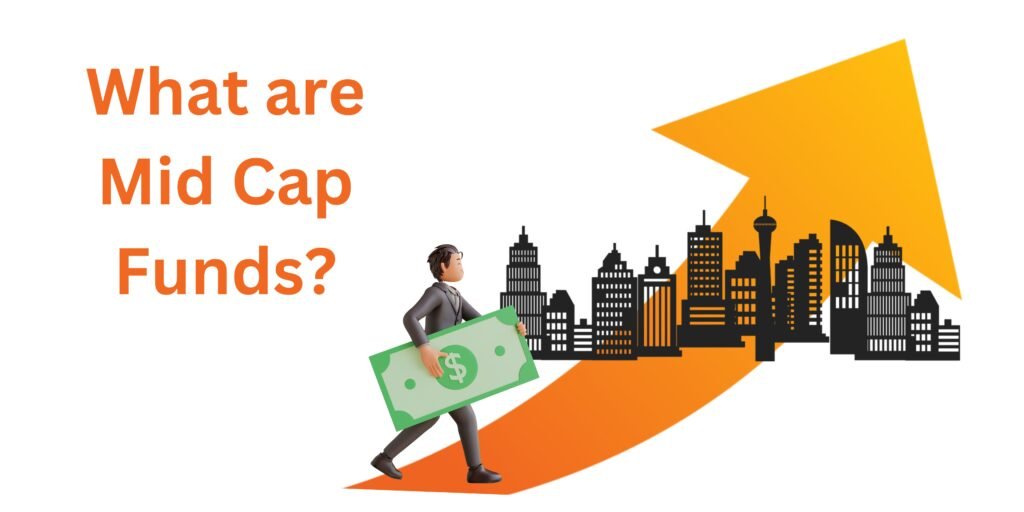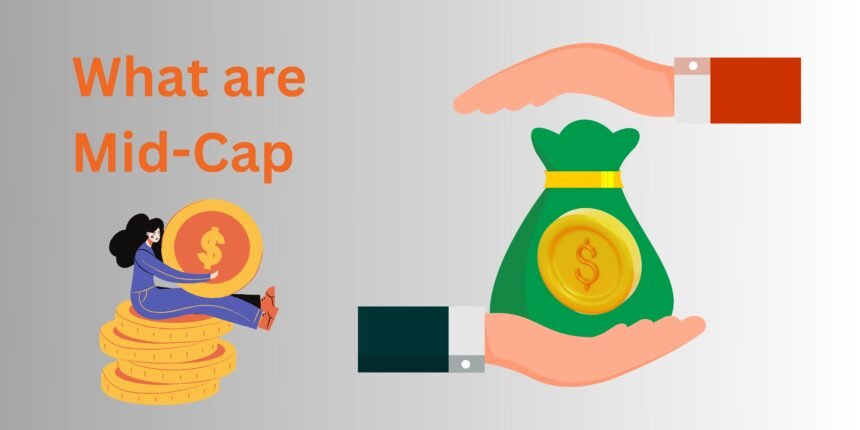Hello there, Mid-cap funds, or ETFs, are mutual funds that invest in mid-cap companies. A wide range of funds, stocks, and bonds are available for exploration in the world of investing. Mid-cap funds are a noteworthy choice, particularly for individuals seeking to strike a balance between growth and risk. However, what are mid-cap funds precisely, and why are they important to you? Let’s explore this fascinating universe and simplify it for everyone to grasp.
When it comes to investing, there’s a vast landscape to explore, filled with a variety of funds, stocks, and bonds. One option that stands out, especially for those looking to balance risk and growth, is mid-cap funds. But what exactly are mid-cap funds, and why should they matter to you? Let’s delve into this intriguing world and break it down in a way that’s easy to understand.
What are mid-cap funds?
Mid-cap funds, or ETFs, are mutual funds that invest in mid-cap companies. These companies typically have a market capitalization ranging from $2 billion to $10 billion. They’re not as large and established as large-cap companies (like Apple or Microsoft), but they’re also not as small and volatile as small-cap companies.

A particular kind of mutual fund or exchange-traded fund (ETF) that invests in medium-sized businesses is called a “mid-cap fund.” Here’s a quick summary:
- Company Size: The term “mid-cap” describes these companies’ market capitalization, which normally falls between $2 billion and $10 billion. The process of calculating market capitalization involves multiplying the stock price of a company by the total number of outstanding shares.
- Growth Potential: Although mid-cap businesses are often more established than small-cap businesses, they still have a lot of space to develop. They could be breaking into new markets, creating new products, or increasing their market share.
- Risk and Return: Investing in mid-cap funds provides a middle ground between large-cap funds‘ stability (but usually slower growth) and small-cap funds’ great growth potential (and higher risk).
- Portfolio diversification: Mid-cap funds can aid in portfolio diversification. They frequently contain equities from a variety of businesses, distributing risk throughout several economic sectors.
- Investment Strategy: Growth and stability are frequently sought-after qualities by investors in mid-cap funds. If you’re ready to take on some modest risk in exchange for the possibility of earning larger returns than large-cap funds, these funds might be a good fit for you.
Simply put, mid-cap funds seek to find a middle ground between offering investors substantial growth potential and avoiding some of the excessive volatility linked to small-cap equities.
Techniques for Investing in Mid-Cap Funds
Diversification with Mid-Cap Funds
The foundation of any financial strategy is diversification. Mid-cap funds might help you strike a solid mix between stability and growth potential in your portfolio. This aids in distributing risk among various industries and businesses.
Growth Potential
You can profit from these firms’ growth phase by investing in mid-cap funds. Compared to large-cap companies, they frequently can grow more quickly, yielding larger profits over time.
Long-Term vs. Short-Term Investment
Long-term investing methods are typically better suited for mid-cap funds. This enables you to profit from these companies’ long-term growth while weathering market swings.
How to Choose the Right Mid-Cap Fund
Analyzing Fund Performance
Look at the historical performance of the fund. Compare it to benchmarks and see how it has performed in different market conditions. This will give you a better idea of its potential future performance.
Evaluating Fund Management
The success of actively managed funds often depends on the skill of the fund manager. Research the manager’s track record and investment strategy to ensure they align with your goals.
Understanding Fund Fees and Expenses
Be aware of the fees associated with mid-cap funds. Lower fees can significantly impact your overall returns, so it’s crucial to consider them when choosing a fund.
Comparing Mid-Cap Funds with Other Funds
Mid-Cap Funds vs. Large-Cap Funds
Well-established businesses with a market capitalization of more than $10 billion are invested in large-cap funds. Although they provide stability, they frequently have less room for development than mid-cap funds.
Mid-Cap Funds vs. Small-Cap Funds
Smaller businesses with market capitalizations under $2 billion are invested in by small-cap funds. Although there may be more room for growth with these products, there is also more risk and volatility.
Mid-Cap Funds vs. Mutual Funds and ETFs
Mid-cap equities are among the assets that mutual funds and exchange-traded funds (ETFs) can invest in. While mutual funds offer expert management and diversification, exchange-traded funds (ETFs) typically offer lower costs and greater flexibility.
Types of Mid-Cap Funds
Actively Managed Mid-Cap Funds
These funds are managed by professional fund managers who actively make decisions about which stocks to buy and sell. The goal is to outperform the market, but this comes with higher fees due to the active management involved.
Passively Managed Mid-Cap Funds
Also known as index funds, these funds aim to replicate the performance of a specific mid-cap index. They typically have lower fees and offer consistent performance but may not beat the market.
Index-Based Mid-Cap Funds
These funds track specific mid-cap indices, like the S&P MidCap 400. They provide broad exposure to mid-cap stocks and are often cheaper than actively managed funds.
Market Trends and Mid-Cap Funds
Current Trends in Mid-Cap Funds
Stay updated on the latest market trends, such as emerging sectors within mid-cap companies and shifts in investor sentiment. These trends can provide valuable insights into potential investment opportunities.
Future Outlook for Mid-Cap Funds
The future outlook for mid-cap funds remains positive, with many experts predicting continued growth. However, it’s essential to stay informed and adjust your investment strategy as needed.
Economic Impacts on Mid-Cap Funds
Economic conditions, such as interest rates and inflation, can significantly impact mid-cap funds. Understanding these impacts can help you make informed investment decisions.
Which cap is best for SIP?
For SIP (Systematic Investment Plan), large-cap funds are often considered the best due to their stability, lower risk, and steady returns. They invest in well-established, financially sound companies, making them suitable for long-term wealth creation.
Which midcap fund is best for 2024?
For 2024, one of the highly recommended midcap funds is the Mirae Asset Emerging Bluechip Fund. It has a strong track record of consistent performance, solid management, and a diversified portfolio. However, always consider your financial goals and risk tolerance, and consult with a financial advisor before making any investment decisions.
Is it good to invest in a mid-cap fund?
Yes, investing in a mid-cap fund can be a good option. Mid-cap funds offer a balance between risk and return, investing in medium-sized companies with growth potential. They are suitable for investors with a moderate risk appetite and a long-term investment horizon, aiming for higher returns than large-cap funds but with less volatility than small-cap funds.
Which mid-cap SIP is best in India?
The best mid-cap SIP in India can vary over time due to market conditions and fund performance. As of now, some consistently top-performing mid-cap SIPs include:
- Axis Midcap Fund
- DSP Midcap Fund
- Mirae Asset Midcap Fund
- Edelweiss Mid-Cap Fund
- Kotak Emerging Equity Fund
It’s important to review their recent performance, expense ratio, and fund manager’s track record before investing. Consulting with a financial advisor is also recommended for personalized advice.
What is the average return of a mid-cap fund?
The average return of a mid-cap fund typically ranges between 12% to 15% per year over the long term. However, returns can vary based on market conditions and the specific fund’s performance.
Which mid-cap fund gives the highest return?
One of the mid-cap funds known for delivering high returns is the Axis Midcap Fund. It has consistently outperformed its peers and the benchmark, making it a popular choice for investors seeking higher returns in the mid-cap segment.

